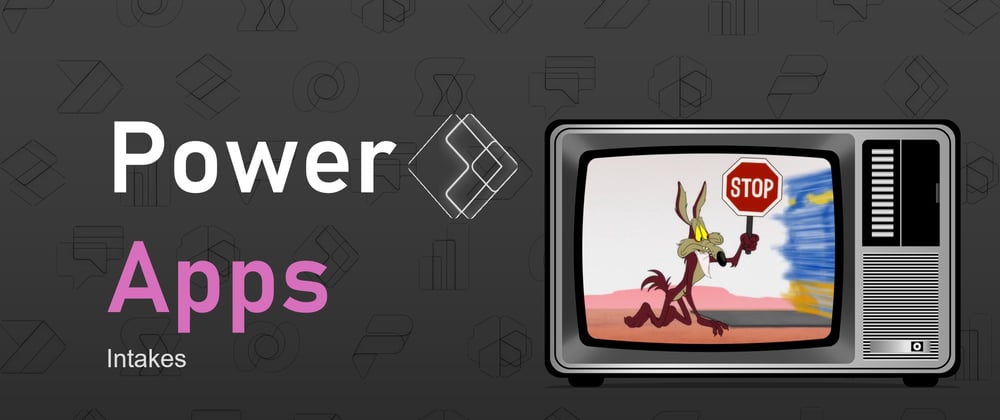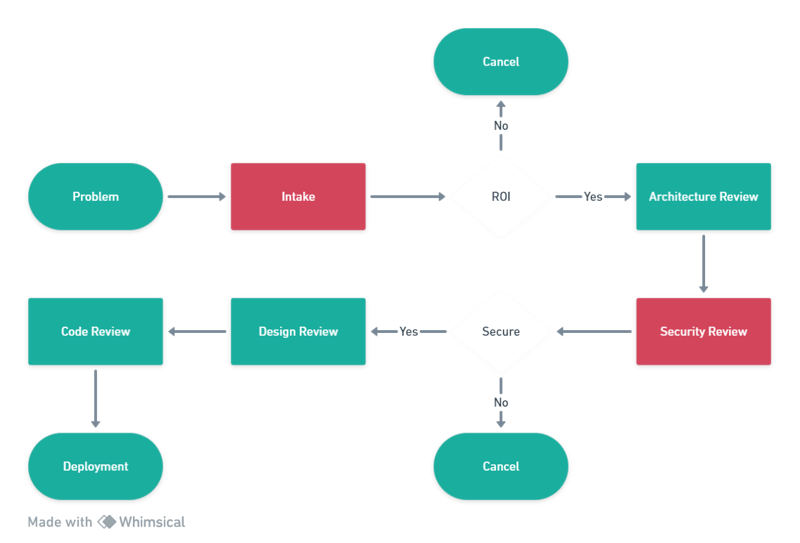The production journey can be a long one, and with LowCode it is often longer then the time taken to design and build the solution.
What is the production journey you may ask, well its:
The end to end journey of taking a customer request through to a stable, scalable solution that meets the customers requirements and the organizations governance.
The journey requires multiple stages of reviews, analysis, testing, approvals, support setup and development. All of these stages are key, particular the reviews. The key ones are:
- Intake
- Architecture Review
- Security Review
- Design Review
- Code Review
There are optional ones like Impact (focus on systems impacted by solution) but they are often specific to the type e.g Impact is generally more for RPA and integrations.
I have spoken about the others so today I wanted to complete the journey with the first step, Intake (and yes I know it's a bit strange to end with the first step but oh well 😎)
The Intake is the opening meeting for the solution owner, development team and platform team, to showcase what the problem is. Ideally the Intake should start with a problem, not a solution, but that is dependent on your setup.
If possible you would roll up all of your possible delivery platforms into one Intake, allowing each team to explain if it is possible on their platform. A great example would be combining Power Apps and Power BI, as the business may be thinking of an App when actually a Dashboard would be better solution.
This could scale out to include other LowCode technology like Blue Prism and Dell Boomi, or full ProCode solutions built from the ground up. There is very rarely only one way to solve a problem, and the only way to make sure you make the right decision is to be fully informed.
Another key aspect of the Intake is to get an understanding of the business value, that way the platform teams can give a rough estimate, and if it's worth the development time. LowCode platforms like Power Apps definitely lower the cost and therefore increase opportunities but there are still many costs to consider:
- Development time
- Licenses (Premium App, AI Builder)
- Storage costs (Dataverse, Azure)
- Support Desk (training, documentation, % staffing)
- Support Reviews (Arch, Security, Snr Dev time)
just to name a few. If the App only saves $100 a week but costs $200 then its a no brainer that the solution should not be carried forward.
This is why Intake is what I call a 'Stop/Go' stage, as these reviews decided if the project should go ahead. The other main 'Stop/Go' stages are security (as if it can't be done securely it can't be done), and impact if you do it (if it will bring another system down then it can't go ahead).
Finally the Intake should help set the path for the solution. This will help set out who will support from each different teams (e.g which Architect) and help with estimating timelines.
As shown there are multiple reviews, but depending on the solution you might be able to skip some as well. Example would be if the solution follows a standard, documented pattern then it may not need a security review. Or if identified that Power Apps is the only possible solution and it is fully inside the platform then a Enterprise Architect won't be needed.
The Intake is fundamental to a good production process, it ensures resources are allocated in the right place that the journey is mapped out to ensure the solution is right and delivered at pace.









Top comments (1)
love the detailed review process to ensure proper fit for solution !!!